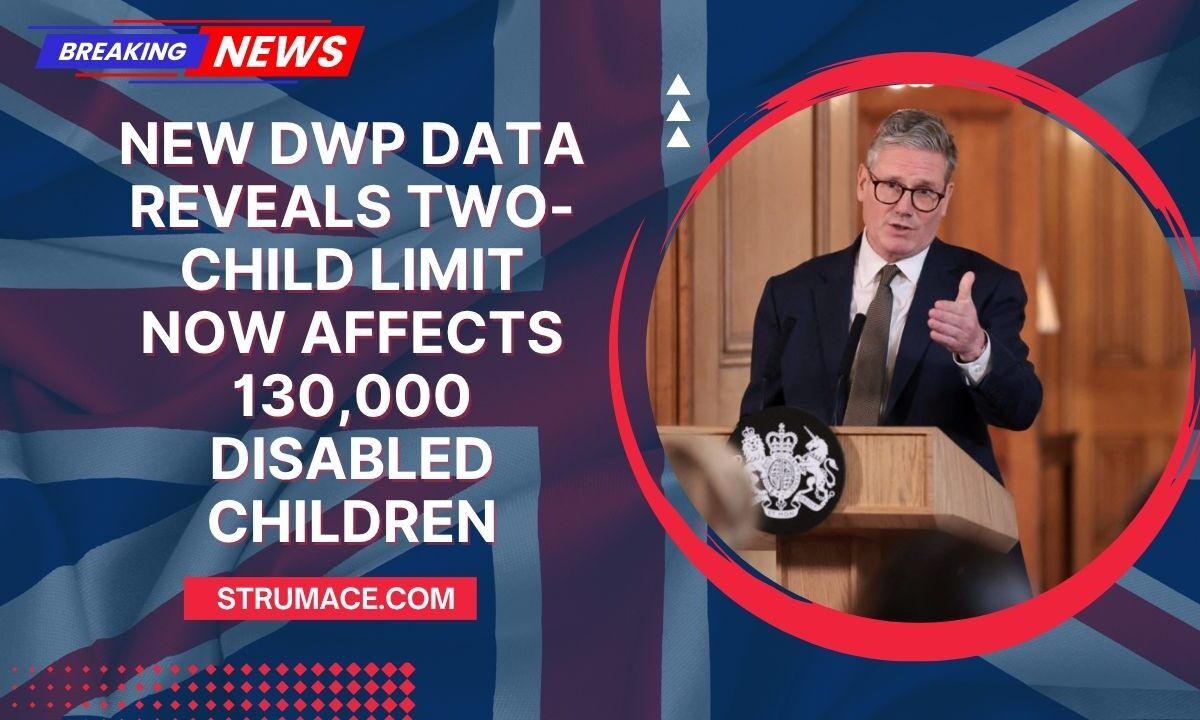The Department for Work and Pensions (DWP) is facing renewed criticism as its two-child benefit limit policy affects more families and children than ever before.
Data published on Tuesday, 29 July 2025, reveals a dramatic rise in the number of households and children impacted—especially disabled children.
Despite mounting pressure, the Labour government has refused to repeal the policy, underscoring a growing disconnect with struggling families.
Understanding the Two-Child Limit Policy
Enforced from 6 April 2017, the DWP two-child limit restricts families from receiving child tax credit or Universal Credit for any third or subsequent children born after this date.
One of the most controversial components of this rule is the so-called “rape clause”, which only allows exemptions for children conceived through non-consensual sex.
This provision has faced intense criticism for being both traumatic and ineffective in addressing the broader harm caused by the policy.
The Devastating Toll on Families and Children
Recent research from the Child Poverty Action Group suggests that abolishing the two-child cap could immediately lift 350,000 children out of poverty, costing the government approximately £2 billion. Another estimate places that number closer to 600,000 children.
Alarming figures show that approximately 109 children are pushed into poverty every day due to this regulation. Its effects are projected to last until 2035, when the first group of affected children reaches adulthood.
Scottish Government’s Different Approach
In contrast, the Scottish government has pledged to eliminate the two-child limit in April 2026, aiming to reduce the hardship faced by Scottish families.
However, critics argue that piecemeal efforts like these are not enough to counter the widespread damage of the UK-wide policy.
Latest DWP Statistics – April 2025
The DWP’s most recent data offers a sobering snapshot of the scale of this issue:
| Metric | Figure | Change from Previous Year |
|---|---|---|
| Universal Credit households affected | 469,780 | +13,520 (↑3%) |
| Children in affected households | 1,665,540 | +37,150 (↑2%) |
| Households with disabled children | 129,630 | 479,460 children impacted |
| Households also under the benefit cap | 38,200 | 141,290 children impacted |
| Households with at least one disabled person | 189,480 | 40% of total affected households |
| Households in work | 59% | Majority still employed |
Additional insights:
- 54% of affected households are single-parent homes.
- 46% are two-parent households.
- 63% have three children, while 25% have four and 8% have five.
Inequity and Systemic Discrimination
The policy’s impact is not evenly distributed. It disproportionately affects women, with 98% of impacted households having at least one female claimant, compared to only 47% with a male claimant. Additionally, Black and brown communities face greater hardship under this policy.
Most shockingly, the data reveals that many of these households are already working and still cannot escape the policy’s financial penalties. This undermines narratives that benefit claimants are unemployed and unwilling to work.
A Missed Opportunity for Reform
Despite earlier suggestions it might reconsider, the Labour government has chosen to uphold the two-child limit. In fact, it has gone so far as to discipline MPs who voted against maintaining the policy.
This decision has been met with strong backlash from anti-poverty advocates, who argue that the government is ignoring the plight of the UK’s most vulnerable children, particularly those who are disabled or already living in poverty.
The DWP two-child limit is no longer just a controversial policy—it is a national crisis affecting the livelihoods of nearly half a million households and millions of children.
Its most severe impact falls on disabled children, single mothers, and working families, revealing deep-rooted systemic inequalities. With evidence mounting and the social cost rising, the question remains: Why is the government still refusing to act?
FAQs
1. What is the DWP two-child limit policy?
The two-child limit restricts families from claiming child tax credit or Universal Credit for any third or subsequent children born after 6 April 2017, unless they qualify for specific exemptions.
2. Who is most affected by this policy?
Single mothers, working families, disabled children, and minority communities are among the groups most impacted by the policy. Over 59% of the affected households are in employment.
3. Will the two-child limit be scrapped?
While the Scottish government plans to end the policy by April 2026, the UK Labour government has indicated it will not repeal the policy, despite growing criticism and new data showing worsening outcomes.
